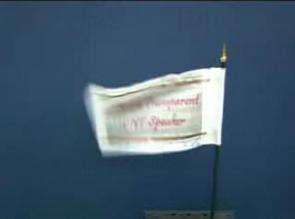November 3, 2008 weblog
Carbon nanotubes could act as an efficient music speaker

(PhysOrg.com) -- While carbon nanotubes are widely praised for their strength and electrical properties, no one has thoroughly investigated their acoustic properties, until now. A team of Chinese researchers has found that zapping sheets of carbon nanotubes with an electric current causes the nanotubes to emit sound.
The team, which consists of scientists Shoushan Fan and colleagues at Tsinghua University in Beijing, China, and Beijing Normal University, hope that the discovery could lead to the development of cheap, flat loudspeakers. Examples of carbon nanotubes´ musical abilities can be heard here and here.
To create the nanotube speaker, the researchers sent an audio frequency current through a thin sheet of carbon nanotubes, generating a sound. Unlike standard loudspeakers that generate sound by vibrations in the surrounding air molecules, the nanotube speaker doesn´t emit vibrations. The team used a laser vibrometer to detect vibrations in the sheet, but found nothing.
Instead, the nanotube speaker likely works as a thermoacoustic device: when an alternating current passes through the sheet, the sheet experiences rapid temperature oscillations alternating between room temperature and 80 °C (176 °F). These temperature oscillations cause pressure oscillations in the surrounding air, producing the sound, while the nanotube sheet remains static. One advantage of this method is that, even if part of the nanotube sheet breaks, it should continue to emit sound, unlike conventional speakers.
This thermoacoustic phenomenon was actually discovered in the late nineteenth century, when scientists passed a current through a thin foil to produce sound, leading to the invention of the "thermophone." Although the principle is the same, however, the nanotube sheet acts much more efficiently than foil because it doesn´t require nearly as much applied heat to increase its temperature. Specifically, the nanotube sheet´s heat capacity is 260 times smaller than platinum foil, making nanotubes 260 times more efficient and able to produce a louder sound.
The Chinese researchers envision several interesting applications for the nanotube speakers. Because the nanotube sheets can be stretched to be visually transparent and still produce sound, they might be fitted over the front of an LCD screen to replace conventional speakers. Another possibility is incorporating the nanotube speakers into textiles to create musical clothes.
More information: Xiao, Lin, et al. "Flexible, Stretchable, Transparent Carbon Nanotube Thin Film Loudspeakers." ASAP Nano Lett., ASAP Article, 10.1021/nl802750z.
© 2009 PhysOrg.com





















